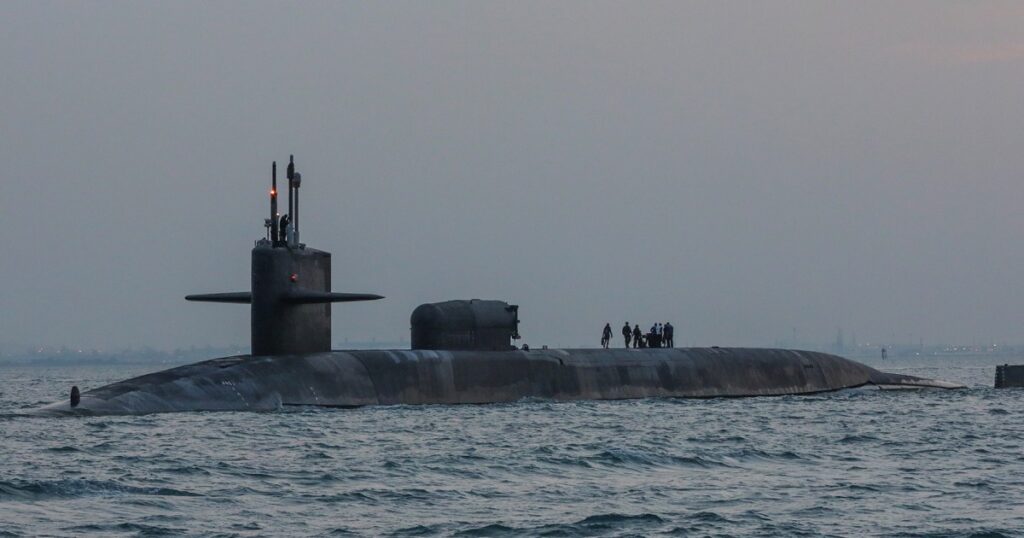The United States is sending missile submarines to the Middle East and accelerating the arrival of an aircraft carrier strike group as Israel prepares for retaliatory attacks by Iran and its proxies following the assassinations of senior Hamas and Hezbollah leaders.
The Pentagon confirmed late Sunday that Defense Secretary Lloyd Austin had ordered the USS Georgia, a guided missile submarine, to the region. Austin also ordered the Abraham Lincoln Carrier Strike Group, equipped with F-35C fighter jets, to accelerate its passage to the region.
The order, and the unusual step of publicly announcing the submarine’s deployment, came after Defense Secretary Austin reaffirmed “the United States’ determination to take all possible steps to defend” its allies in a phone call with Israeli Defense Minister Yoav Gallant, according to a Pentagon statement.
Gallant “gave a detailed briefing on the IDF’s readiness and capabilities in the face of threats from Iran and its regional proxies, and discussed interoperability with a wide range of U.S. military capabilities in the region,” his office said.
The guided-missile submarine USS Georgia at sea in 2020. U.S. Navy/Reuters file.
The move comes amid growing fears that Iran may soon respond to the assassination of Hamas political leader Ismail Haniyeh, who was killed in an attack on his Tehran home last month after attending the inauguration of Iranian President Massoud Pezechkian.
Both Iran and Hamas have blamed Israel for the killing, and although Israel has remained silent on the matter, it is widely believed to have carried out the assassination.
Iran’s Supreme Leader Ayatollah Ali Khamenei vowed “severe punishment” for the assassination, after which Yahya Sinwar, the alleged mastermind of Hamas’ October 7 terror attack on Israel, was named as the group’s political leader.
However, it is unclear how exactly Iran plans to retaliate.
Reports that the country’s Revolutionary Guards began military drills last week stoked fears from the United States and its allies that a response could spark an escalation of regional conflict.
Iranian citizens hold up a portrait of Hamas leader Ismail Haniyeh during his funeral procession in Tehran on August 1, 2024. AFP – Getty Images File
The Iran-backed Lebanese militant group Hezbollah had similarly vowed to avenge the killing of its senior commander, Fouad Shukr, in Beirut, hours before Haniyeh’s assassination.
As tensions rise, the United States is stepping up pressure on Israel and Hamas to reach a ceasefire and hostage release agreement and end Israel’s deadly attacks in the Gaza Strip, which have killed around 40,000 people in the months since Hamas began attacks on Israel, including about 1,200 killed and about 250 taken hostage, according to local officials.
Israel is facing renewed scrutiny after it launched a deadly attack on a Gaza City school where displaced residents were taking shelter on Saturday morning, killing at least 100 people and wounding dozens, according to Gaza’s civil defense agency.
The IDF said it was targeting a Hamas command center embedded in the school compound, and that “a number of measures were taken to mitigate the risk of harming civilians.” NBC News was not able to independently confirm whether there was a command center at the school.
In a statement, the White House said it was “deeply concerned” by the attack and noted that it had “repeatedly and consistently” warned that Israel must take steps to minimize civilian casualties.



